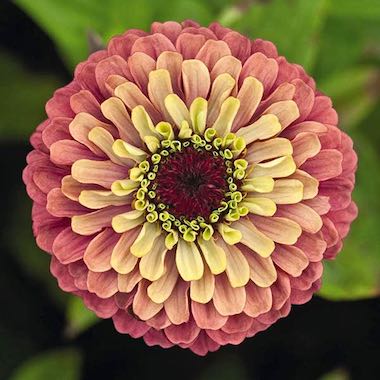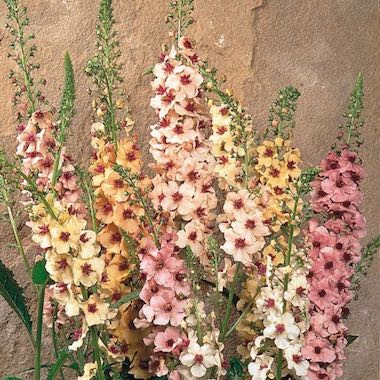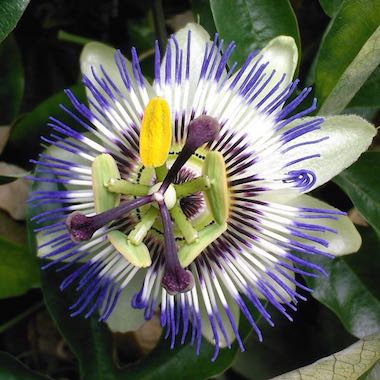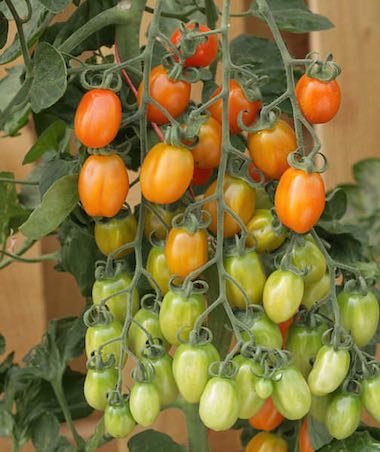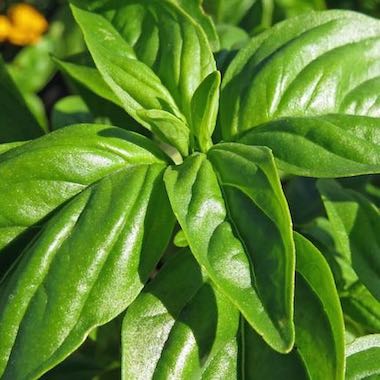Early Blight and Septoria Leaf Spot on Tomato Plants
Early blight and Septoria leaf spot infections on tomato plants most commonly begin in the early or middle part of the growing season but can start at any time. Infections can occur anywhere and are most severe in wet and humid areas.
How to identify Early Blight
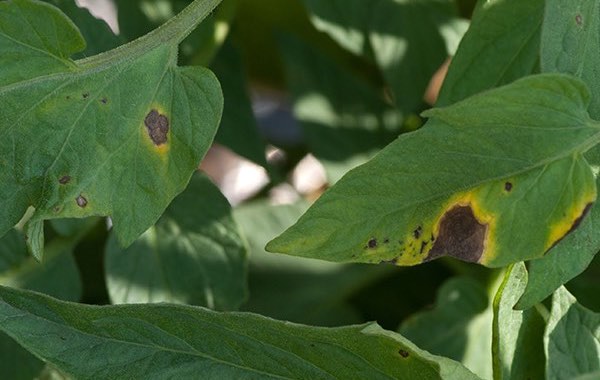
Photo of Early Blight by Dwight Sipler [CC BY 2.0]
Symptoms of early blight typically begin on the older, lower leaves of a tomato plant. Over time, infections spread upward to newer growth. Early blight infections appear as spots that may start out circular or irregular in shape. Spots are dark brown in color and form concentric rings, or a bullseye pattern, as they grow. The area around the infection commonly turns yellow. As infections grow, leaves may fall off. Extensive loss of foliage is common. Infections most commonly occur on leaves but can also appear on stems and fruit.
How to identify Septoria Leaf Spot
Symptoms of Septoria leaf spot also start on the older, lower leaves of a tomato plant and spread upward to newer growth. The spots start out circular but change shape as they grow and can merge with other spots. Spots typically have a dark brown edge with a lighter gray or tan center. Small dark spots, the fruiting bodies of the fungus, will appear in the gray or tan centers. As infections progress, leaves can turn yellow, then brown and finally dry and dead. Stems can also become infected but infection of fruit is rare.
How to Prevent and Control Early Blight and Septoria Leaf Spot
Follow the 12 easy steps below to enjoy a long season of sweet cherry tomatoes, colorful heirloom tomatoes, vigorous hybrid tomatoes, and richly flavored sauce tomatoes.
- Weed your garden. Some weeds, like nightshade, can host early blight and Septoria leaf spot and spread them to your tomato plants.
- Rotate crop locations. Don’t plant your tomatoes in the same place each year. Early blight and Septoria leaf spot can persist for multiple years in areas where tomatoes were grown.
- Give your tomato plants more space for better airflow. At least 2 feet of spacing, more is better.
- Cover the ground beneath your tomato plants with mulch, plastic or landscape fabric. A cover helps prevent the spread of fungus from the soil to your plants.
- Stake or cage plants to keep them off the ground. Early blight and Septoria leaf spot can survive on stakes and cages. Use only new or disinfected stakes and cages.
- Remove lower leaves for better airflow. As plants mature, remove lower leaves until there is about 8 to 10 inches of space above the soil without any leaves.
- Do not use overhead watering. Avoid getting leaves and stems wet as much as possible and avoid watering in a way that may splash soil onto your plants. Consider using a soaker hose or drip tape.
- Water in the early part of the day. This allows leaves to dry faster. Wet leaves allow fungus to grow and spread.
- Avoid working with plants when they are wet. Fungus can be spread more easily when leaves are wet.
- Keep your plants happy and healthy. Weak and stressed plants are more susceptible to disease.
- Remove and destroy or throw away diseased leaves, both off the plant and any that have fallen onto the ground. This may help stop the spread if caught early enough. If a plant is heavily infected, the entire plant should be removed and destroyed. Do not put infected leaves or plants in a compost pile. Tools used to remove diseased leaves should be disinfected before being used on a different plant.
- Spray plants to prevent and control the spread of Early blight and Septoria leaf spot. Commercial fungicides are available. For organic gardens, try GreenCure.
Late Blight on Tomato Plants
Late blight is another fungus that infects tomato plants. It spreads fast and can quickly kill all tomato plants in a garden. Once a tomato plant is infected with late blight, the entire plant should be removed and destroyed. Late blight infections first appear as small, water-soaked spots on leaves and stems that grow and turn dark brown or gray. A white downy growth may develop on the underside of infected leaves. Late blight can infect all parts of a tomato plant, including the fruit. Most of the methods for preventing early blight and Septoria leaf spot infections will also help prevent late blight infections.


